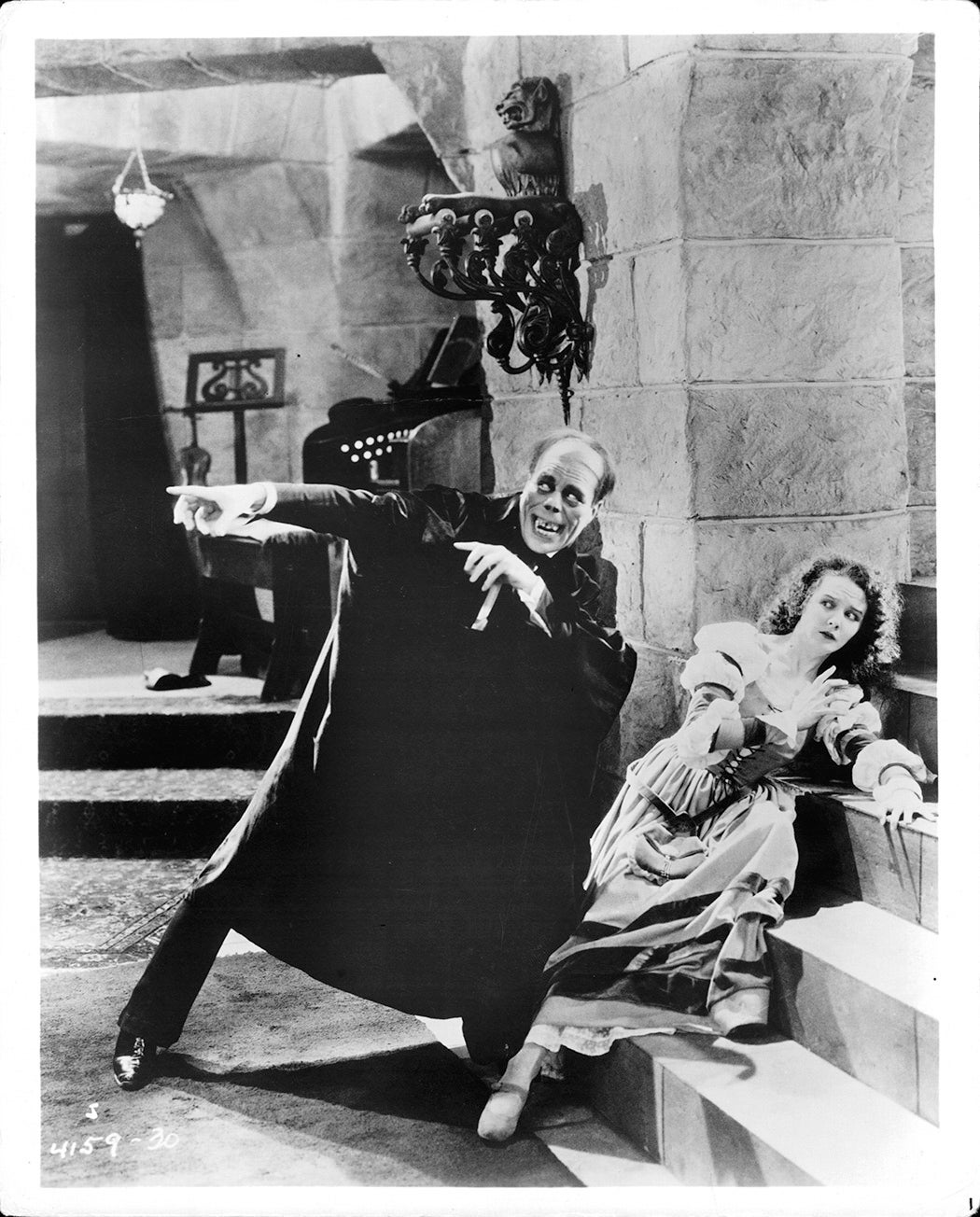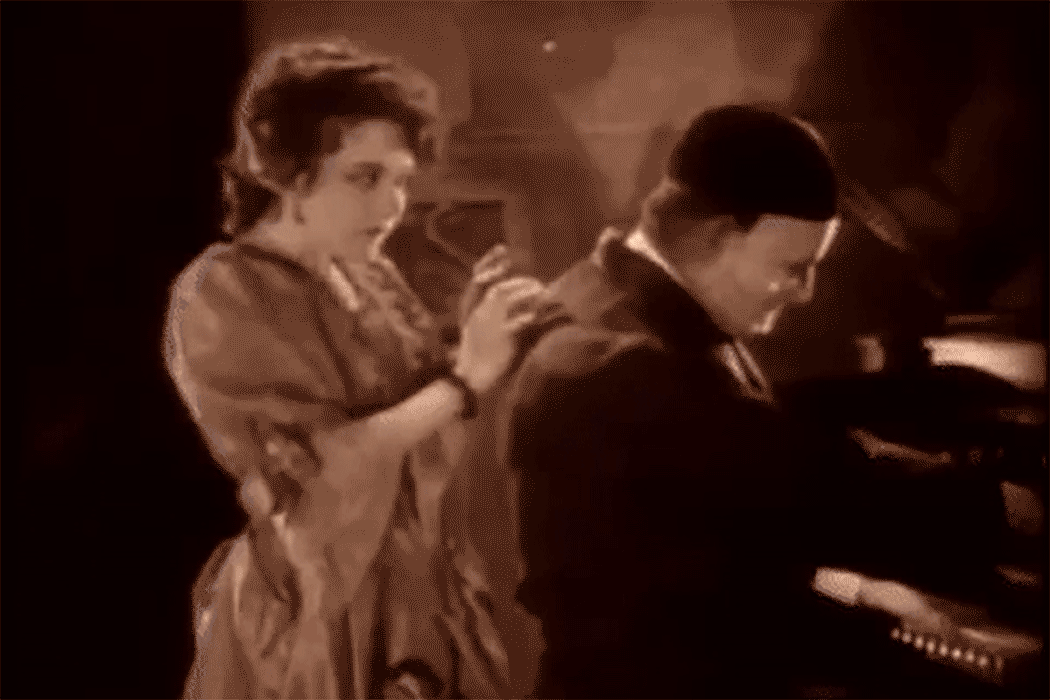When Robert Williams stood trial for murder in Old Bailey, the Central Criminal Court of England and Wales, in 1929, he offered an unusual defense. Williams, a carpenter, argued that he had been driven to the point of insanity, killing an Irish chambermaid in “an epileptic fit” brought on by the mere memory of Lon Chaney’s face. Before the jury could snicker at this reasoning—blaming a popular movie actor for a murder many miles from Hollywood—the presiding justice insisted they hear him out.
“‘If Williams saw the film ‘London After Midnight,’ in which Chaney takes the part of a detective who pretends to be a terrifying ghost,’ said the judge to the jury, ‘you may not think it remarkable or indicating insanity that he should in a moment of emotional excitement remember the horrifying aspect of the actor in a part in which he was being purposefully terrible,’” the New York Times reported.
As this trial illustrates, Lon Chaney was very good at his job. Between 1913 and 1930, the actor made his name as the “man of a thousand faces” who terrified audiences with his takes on the Phantom of the Opera and Quasimodo, the hunchback of Notre Dame. Chaney was so committed to making monsters that he often suffered for them, disappearing under painful prosthetics he created himself. He was so effective at crafting these grotesque looks that few knew who he actually was.
Chaney grew up in Colorado Springs with his parents and three siblings. Communicating with his mother and father, who were both deaf, apparently helped Chaney develop pantomime skills at a young age, setting him down the path toward performance. He started working as a stage hand at the local opera house when he was still a teenager, eventually graduating to acting work in theatrical troupes. As the author Michael Dempsey notes in Film Comment, in a rare interview, Chaney credited his actorly intensity to his early exposure to theater:
“Even as a prop boy, I used to watch Richard Mansfield and Robert Montell and others,” Chaney recalled. “Those old actors never showed the audience themselves, but really donned the personality of the character they were playing. From the beginning of my career I always strove to bury my own personality in any part. I never wanted to be a type, playing nothing but myself.”
Chaney’s philosophy and approach makes him sound a bit like a method actor. He was guarded, rarely revealing much of himself in the press, and deeply invested in the process of becoming a character. But while method actors tend to emphasize the intense mental work it takes to get inside another person’s head, Chaney’s career was defined by the physical.

A self-taught master of stage makeup, he used his skills to construct dramatic visages, the kind that spurred immediate, visceral reactions from both the audience and his costars. These transformations caused Chaney a considerable amount of discomfort. He frequently gave himself nosebleeds by twisting fish hooks and safety pins into his nose to distort its shape, and fit himself with a constrictive harness and hump to play Quasimodo. He used his pain to fuel his vulnerable performances as “monstrous” outsiders desperately seeking love and acceptance—and rarely receiving it.
Chaney’s dedication to the craft earned him enormous respect among his peers. His costar Joan Crawford called him “the most intense, exciting individual I’d ever met,” adding that watching him act “it was as if God was working, he had such profound concentration.” Burt Lancaster, meanwhile, was astounded by Chaney’s performance opposite Crawford in The Unknown, calling the climax “the most emotionally compelling scene I’ve ever seen an actor do.” Lancaster shared this admiration with makeup artist and eventual Chaney biographer Michael Blake, who kept a photo of Chaney in his makeup kit.
The public adored him. Dempsey details the unique response Chaney provoked from audiences, who scanned every one of his movies for a possible additional cameo in an entirely different disguise. When Chaney’s only sound film, The Unholy Three, debuted in 1930, moviegoers got into endless debates about the actor’s “real” voice because, in true Chaney fashion, he used five different ones for the film.
Weekly Newsletter
When Chaney died, soon after the release of The Unholy Three, he was buried to the strains of the “mood music” he used on set to get in character—his final request to his widow, Hazel, before he passed. His figure loomed large years after his death, as evidenced by a rather grotesque piece of advertising from his studio, Universal, in 1932:
If Lon Chaney, the master character actor of the screen—the master make-up artist whose world-fame started with his amazing characterization of the cripple in Universal’s classic, “The Hunchback of Notre Dame”—if he could speak, I think he would say to you: “Karloff created a masterpiece as the mechanical monster in ‘Frankenstein.’ Karloff created a masterpiece as the mad butler in ‘The Old Dark House.’ Karloff created a masterpiece as the mysterious one in ‘The Mummy.’”
Universal is intensely proud of its part in contributing Chaney and Karloff to posterity.
Boris Karloff forged his own creative career with makeup-heavy monsters in the years following Chaney’s death, but there was only one man of a thousand faces, one actor so intense he made Burt Lancaster gush and an English carpenter plead insanity: Lon Chaney, perpetual disappearing act.







